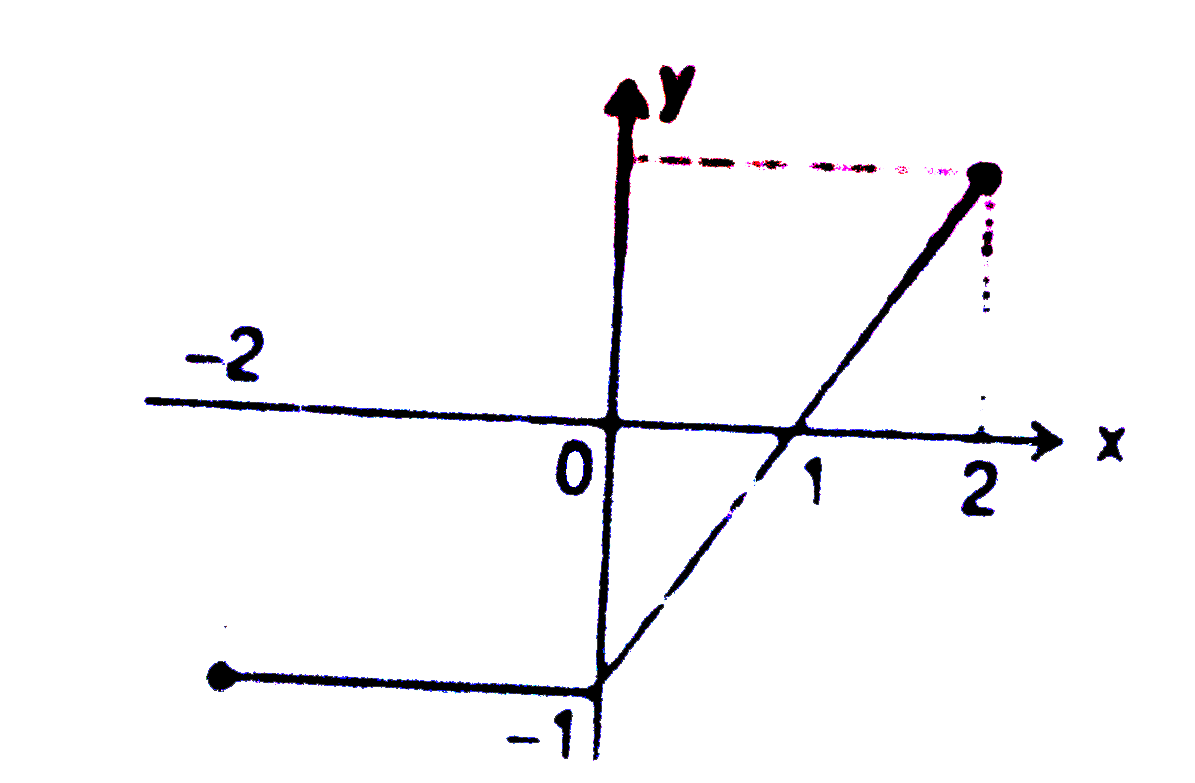The graph of the function y=f(x) has a unique tangent at the point (ea,0) through which the graph passes then lim–––––(x→ea)loge{1+7f(x)}−sinf(x)3f(x)
1
2
7
None of these
The correct Answer is:B
To solve the limit problem given in the question, we will follow these steps:
Step 1: Identify the limit expression
We need to evaluate the limit:
limx→ealoge(1+7f(x))−sin(f(x))3f(x)
Step 2: Substitute the point of tangency
Given that the graph passes through the point (ea,0), we know:
f(ea)=0
Substituting x=ea:
loge(1+7f(ea))−sin(f(ea))=loge(1+7⋅0)−sin(0)=loge(1)−0=0
Thus, the numerator becomes 0.
Step 3: Evaluate the denominator
Similarly, substituting x=ea into the denominator:
3f(ea)=3⋅0=0
So, we have a 0/0 indeterminate form:
00
Step 4: Apply L'Hôpital's Rule
Since we have a 0/0 form, we can apply L'Hôpital's Rule, which states that:
limx→cf(x)g(x)=limx→cf′(x)g′(x)
if the limit on the right exists.
Step 5: Differentiate the numerator and denominator
Differentiate the numerator:
ddx(loge(1+7f(x))−sin(f(x)))=7f′(x)1+7f(x)−cos(f(x))⋅f′(x)
Differentiate the denominator:
ddx(3f(x))=3f′(x)
Step 6: Rewrite the limit using derivatives
Now we can rewrite the limit:
limx→ea7f′(x)1+7f(x)−cos(f(x))f′(x)3f′(x)
Step 7: Simplify the expression
We can factor out f′(x) from the numerator:
=limx→eaf′(x)(71+7f(x)−cos(f(x)))3f′(x)
Assuming f′(x)≠0 near x=ea, we can cancel f′(x):
=limx→ea73(1+7f(x))−cos(f(x))3
Step 8: Substitute x=ea
Now substituting x=ea:
=73(1+7⋅0)−cos(0)3=73⋅1−13=73−13=63=2
Final Answer
Thus, the limit is:
2
We need to evaluate the limit:
limx→ealoge(1+7f(x))−sin(f(x))3f(x)
Given that the graph passes through the point (ea,0), we know:
f(ea)=0
Substituting x=ea:
loge(1+7f(ea))−sin(f(ea))=loge(1+7⋅0)−sin(0)=loge(1)−0=0
Thus, the numerator becomes 0.
Similarly, substituting x=ea into the denominator:
3f(ea)=3⋅0=0
So, we have a 0/0 indeterminate form:
00
Since we have a 0/0 form, we can apply L'Hôpital's Rule, which states that:
limx→cf(x)g(x)=limx→cf′(x)g′(x)
if the limit on the right exists.
Differentiate the numerator:
ddx(loge(1+7f(x))−sin(f(x)))=7f′(x)1+7f(x)−cos(f(x))⋅f′(x)
Differentiate the denominator:
ddx(3f(x))=3f′(x)
Now we can rewrite the limit:
limx→ea7f′(x)1+7f(x)−cos(f(x))f′(x)3f′(x)
We can factor out f′(x) from the numerator:
=limx→eaf′(x)(71+7f(x)−cos(f(x)))3f′(x)
Assuming f′(x)≠0 near x=ea, we can cancel f′(x):
=limx→ea73(1+7f(x))−cos(f(x))3
Now substituting x=ea:
=73(1+7⋅0)−cos(0)3=73⋅1−13=73−13=63=2
Thus, the limit is:
2
Topper's Solved these Questions
- LIMITSBOOK - ARIHANT MATHS ENGLISHCHAPTER - LIMITSEXERCISE - Exercise (Single Option Correct Type Questions)
39 Videos
- LIMITSBOOK - ARIHANT MATHS ENGLISHCHAPTER - LIMITSEXERCISE - Exercise (More Than One Correct Option Type Questions)
15 Videos
- INVERSE TRIGONOMETRIC FUNCTIONSBOOK - ARIHANT MATHS ENGLISHCHAPTER - INVERSE TRIGONOMETRIC FUNCTIONSEXERCISE - Exercise (Questions Asked In Previous 13 Years Exam)
8 Videos
- LOGARITHM AND THEIR PROPERTIESBOOK - ARIHANT MATHS ENGLISHCHAPTER - LOGARITHM AND THEIR PROPERTIESEXERCISE - Exercise (Questions Asked In Previous 13 Years Exam)
2 Videos
Similar Questions
The graph of the function y=f(x) has a unique tangent at the point (a,0) through which the graph passes. Then evaluate
limx→aloge{1+6f(x)}3f(x).
View SolutionIf the graph of the function y=f(x) has a unique tangent at the point (a,0) through which the graph passes, then evaluate (lim)x→a(log)e{1+6f(x)}3f(x)
View SolutionIf the graph of the function y=f(x) has a unique tangent at point (ea,0) (not vertical, non-horizontal) on the graph, then evaluate limx→ealoge((1+9f(x))−tan(f(x)))2f(x).
View SolutionDraw the graph of the function: f(x)=log|x|
View Solutionif the graph of the cont. function y=f(x) passes through the point (a, 0) and f(x)≠0 in the deleted neighbourhood of a then (lim)x→alog{6f2(x)−3f(x)+1}3f(x)= (A) 2 (B) 1 (C) -1 (D) none of these
View SolutionDraw the graph of the function f(x)=2x2−loge|x|
View SolutionIf the graph of the function y=f(x) is as shown :

the graph of y=12(|f(x)|−f(x)) is
View SolutionIf graph of the function y=f(x) is continuous and passes through point (3, 1) then limx→3loge(3f(x)−2)2(1−f(x)) is equal
View SolutionIf the graph of the function y=f(x) is as shown :

The graph of y=1/2(|f(x)|−f(x)) is
View SolutionIf the graph of the function y=f(x) is as shown :

The graph of y=1/2(|f(x)|−f(x)) is
View Solution